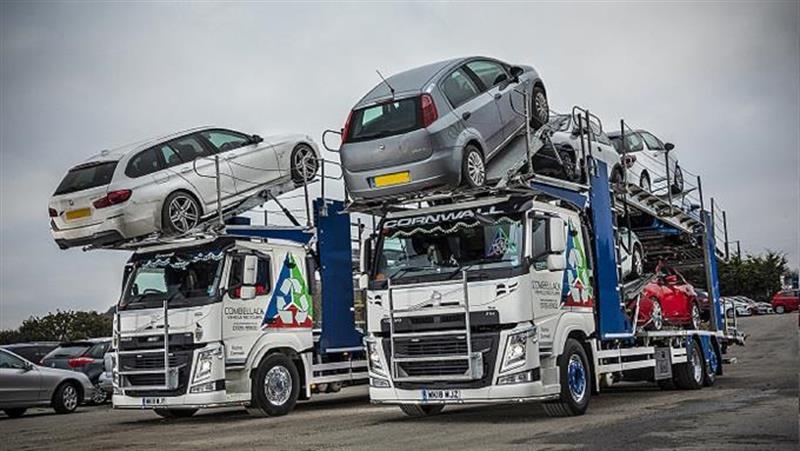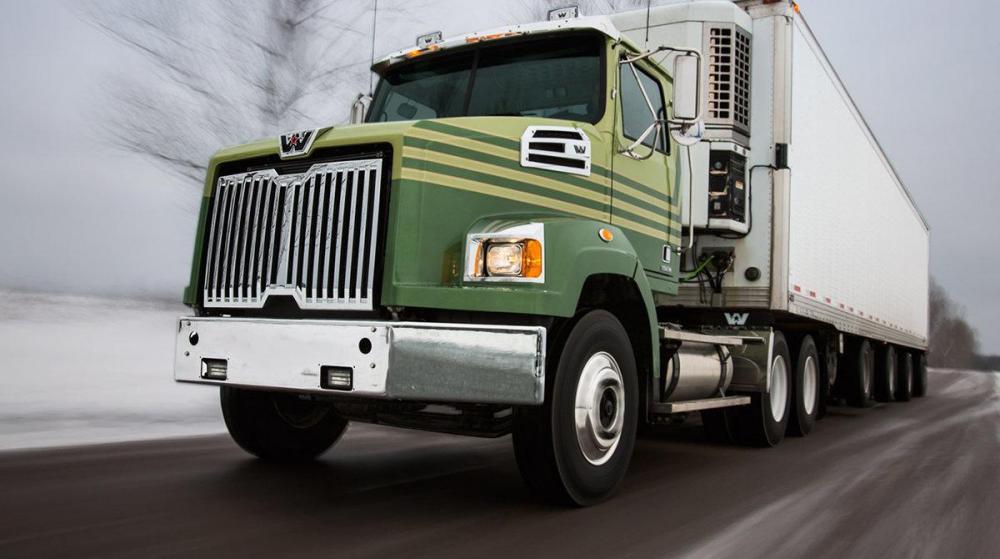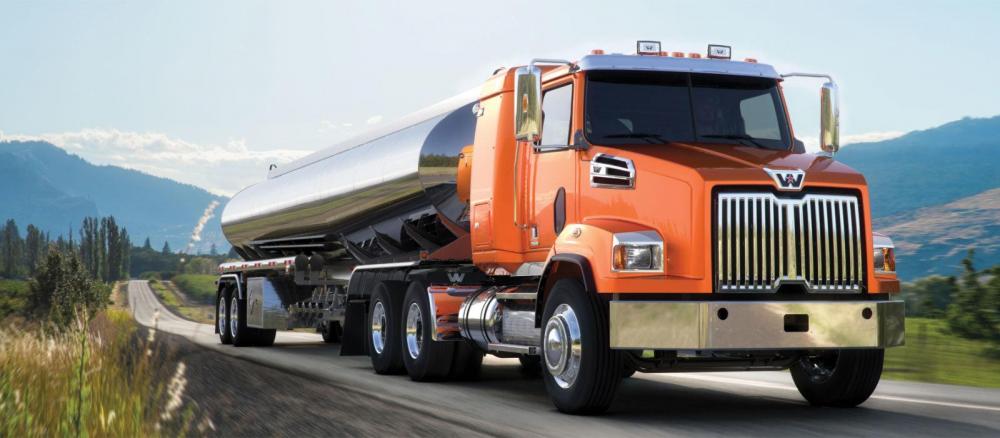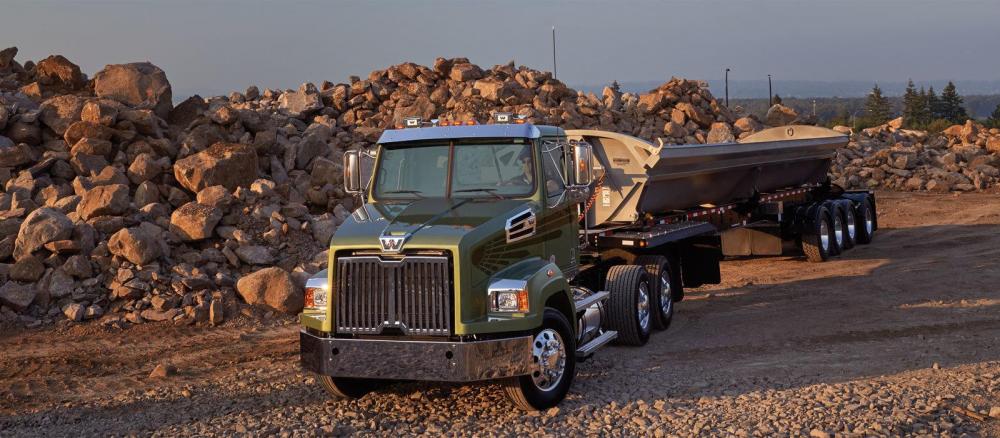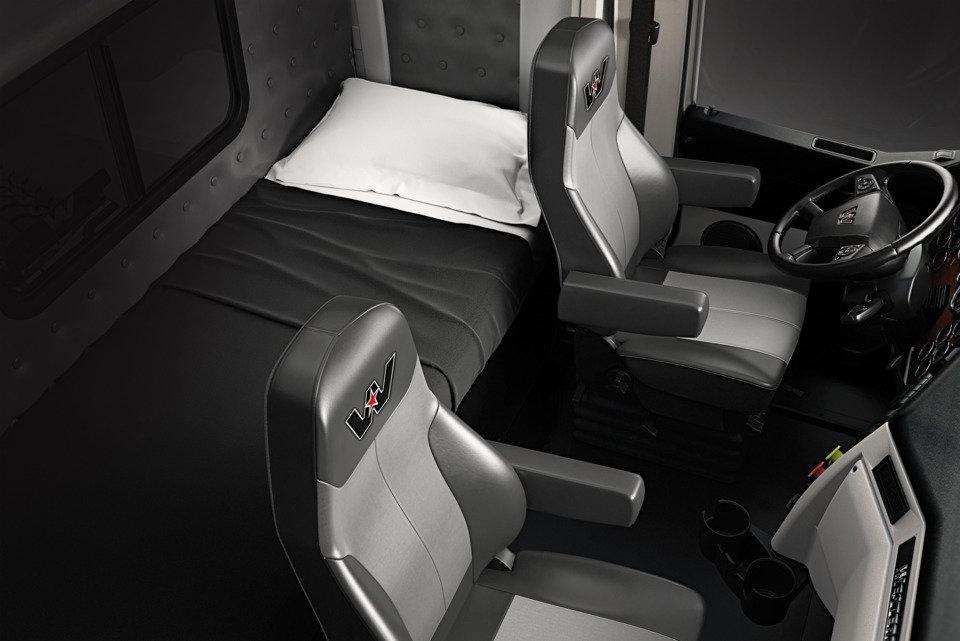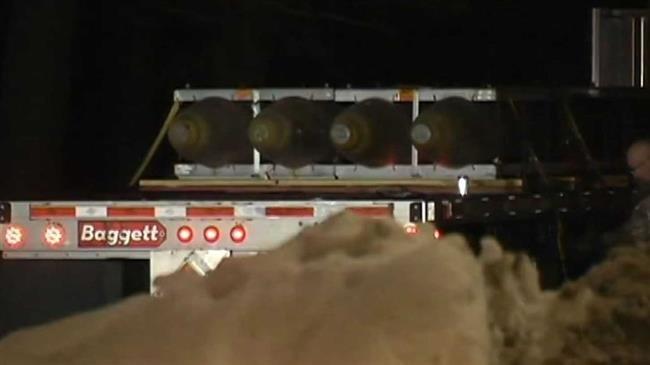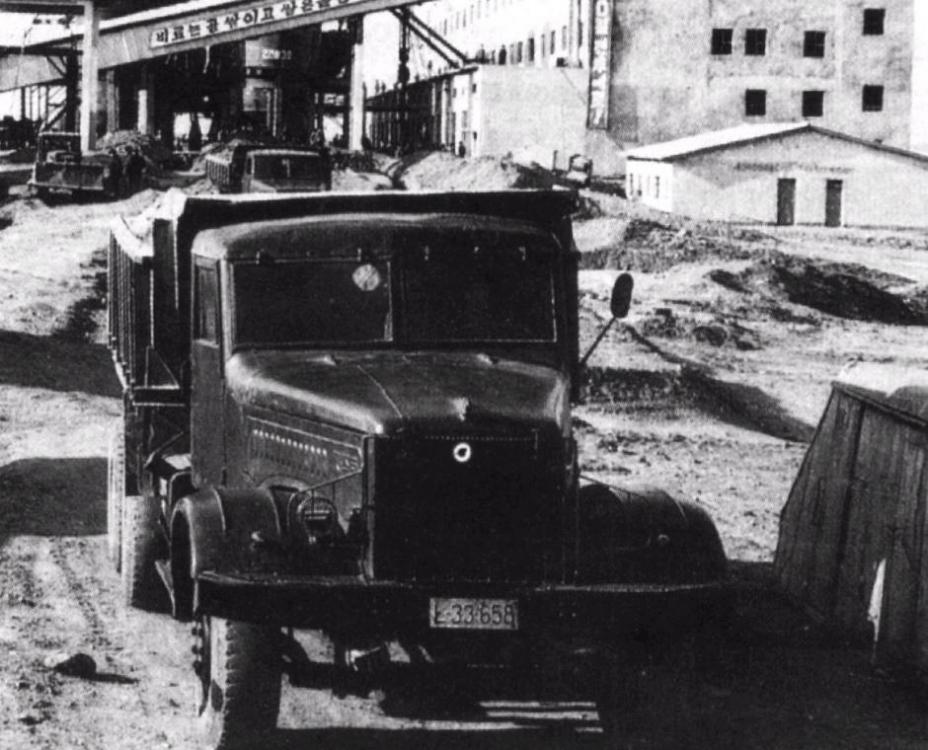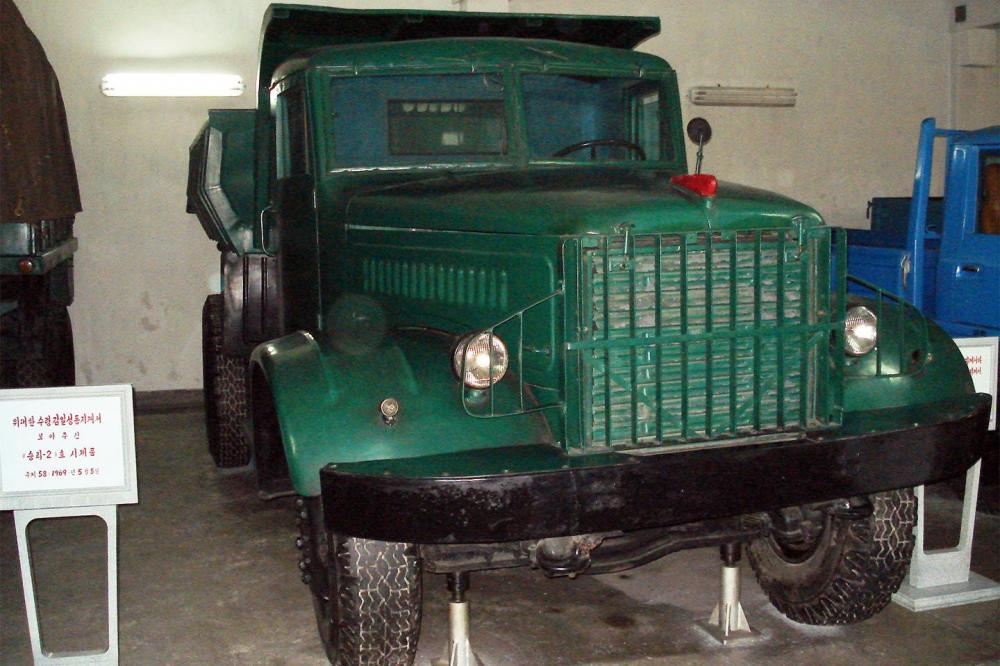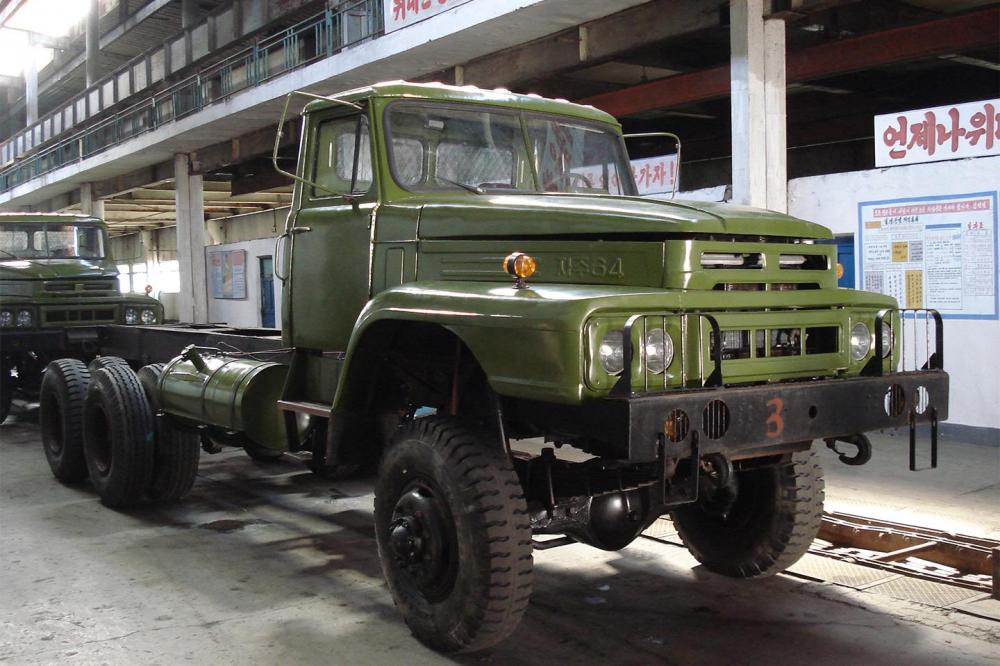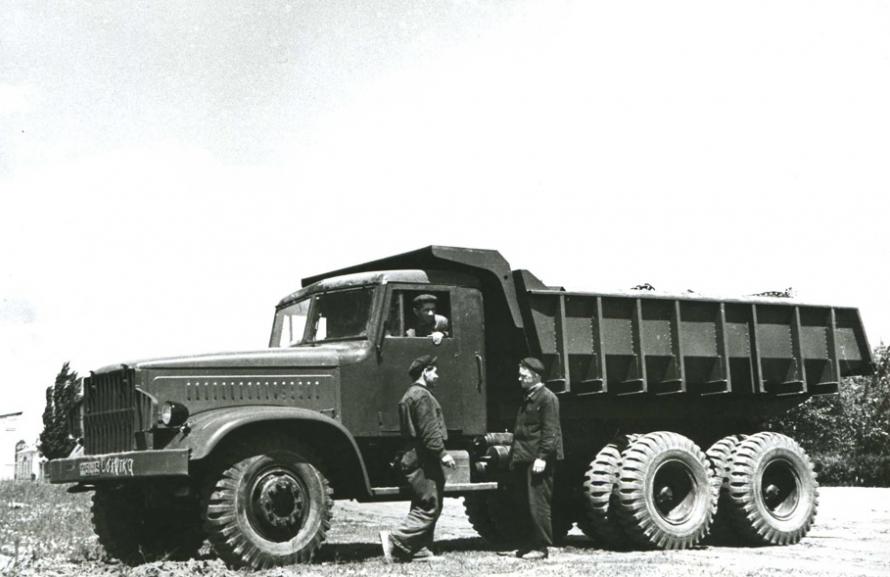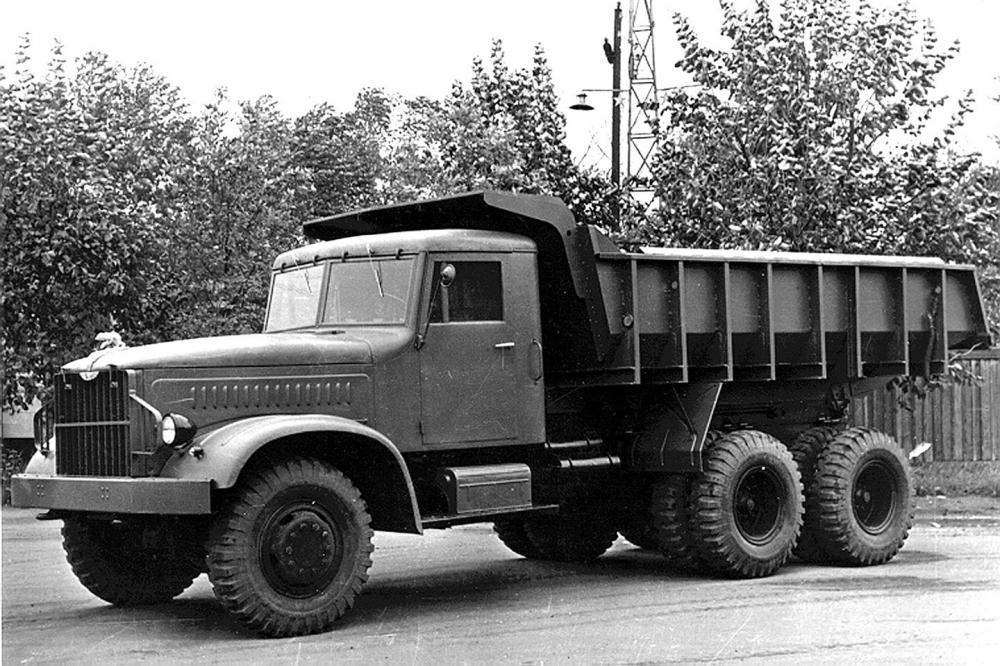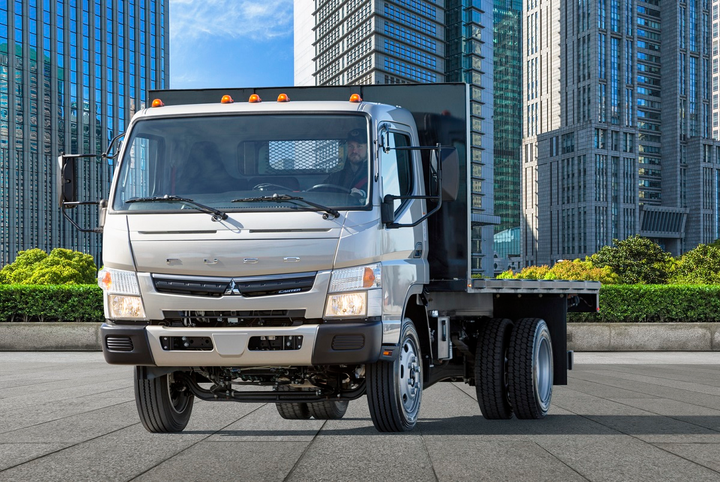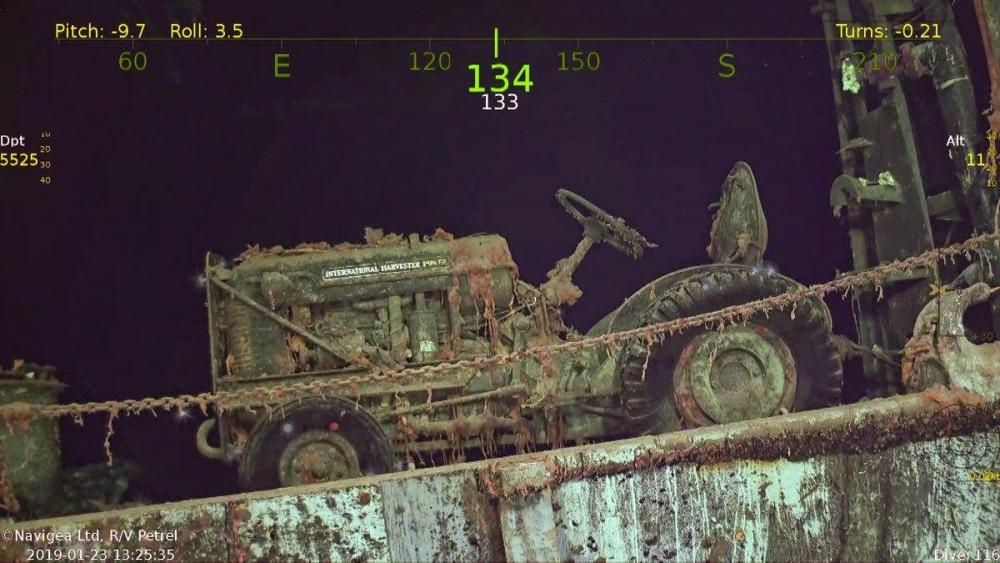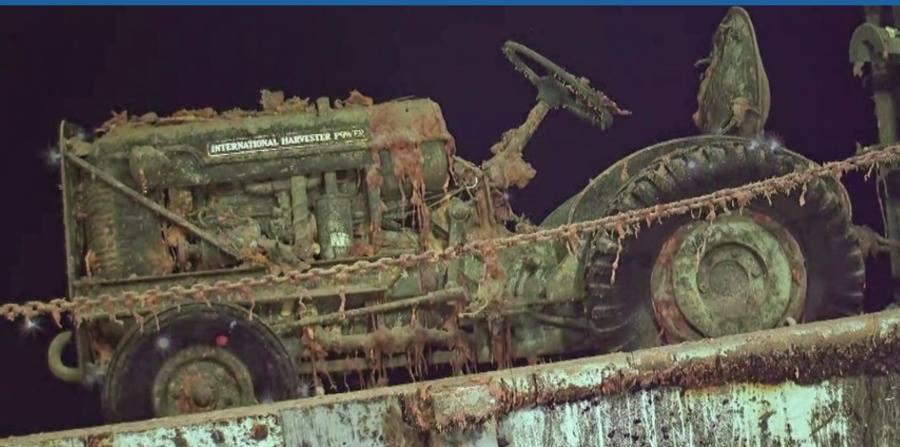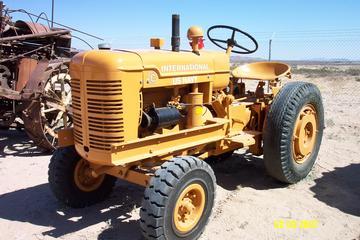
kscarbel2
Moderator-
Posts
18,545 -
Joined
-
Days Won
112
Content Type
Profiles
Forums
Gallery
Events
Blogs
BMT Wiki
Collections
Store
Everything posted by kscarbel2
-
Boeing is having a really bad day. Now Senators Mitt Romney, Richard Blumenthal and Dianne Feinstein are calling for all 737 MAX 8 aircraft to be grounded until what is obviously a problem has been identified and corrected. If this was a US military aircraft, the subject aircraft type would have all been grounded already. Why not a civilian aircraft? Answer - Because too much money is at stake.....the wealthy aristocracy that profits from airline investment will lobby against it.
-
Transport Engineer / March 11, 2019 Cornwall-based Combellack Vehicle Recyclers has taken delivery of two 26-tonne Volvo FM car transporters – the first in the UK to be fitted with fully galvanised eight-car salvage bodywork, by Belle Trailers. Supplied by dealer Stuarts Truck and Bus, both FM-420 6x2 rear-steer lift axle chassis are powered by D13K Euro VI engines rated at 415bhp and drive through I-Shift 12-speed automated transmissions. Inside the Sleeper cabs, Combellack specified full leather trims, refrigerators and Volvo sat-nav/audio packages, along with heated and cooled drivers’ seats. The twin-deck transporters’ specification also includes winches, solid decking and snatch blocks. “The new Volvo FMs are definitely the right truck for our operations and came in at the right price,” says Darren Combellack, general manager at the family-owned business. “Our drivers were involved in the specification process and they’ve been able to personalise the vehicles. The FMs are quiet and comfortable, with good pulling power for the many hills in Cornwall and Devon,” he adds. “The drivers also love the cooled seats, and both vehicles are regularly returning around 9mpg.” Both vehicles are supplied on a seven-year Volvo Gold repair & maintenance contract. .
-
Trucks Planet / March 8, 2019 Daimler AG subsidiary Western Star Trucks has presented an updated version of their 4700 Series truck, the most popular product in the brand's line-up. First introduced in 2011, the 4700 in 6x4 configuration has a GVW from 24 tonnes and are available as a rigid and tractor. This year the trucks got major technical improvement. The newest 11.9-liter Cummins X12 turbodiesel has the power range from 350 to 500 hp, and the torque from 1700 to 2300 Nm. Old engines are still available: 9.0-liter Cummins L9 and a 13.0-liter Detroit DD13. The advantage of the Cummins X12 is its lightweight design, which increases the load capacity and economic efficiency of the trucks. Another important innovation of the 4700 is the new automated Detroit DT12 gearbox. It has a hill climb assistance function and a clutch control system. The new gearbox provides a smoother ride. With this upgrade the Western Star 4700 Series has got new high-comfort mattress, a lane keeping function and an automatic braking system. .
-
Volvo launches FH with I-Save option for long-haul fuel savings
kscarbel2 replied to kscarbel2's topic in Trucking News
. . . . -
"Mack says its on backorder & no idea of when it will be available." Have your Mack brand dealer's parts manager contact their district parts manager (DPM) and ask for their help. If that fails, call Volvo Group's Mack brand "Customer Satisfaction" department in Greensboro, North Carolina at +1 (866) 298-6586. If they try to tell you that they don't help Mack customers with trucks "older than 5 years/500K Miles", tell them your opinion on that given your revenue generating Mack truck is "unit down".
-
Ford Expects Health-Care Costs to Top $1 Billion in 2020 Bloomberg / March 12, 2019 Ford expects the cost of health insurance for its 56,000 hourly workers in the U.S. to top $1 billion for the first time next year, according to a person familiar with the situation, highlighting a growing expense for automakers even as car sales slow. Those mounting health-care costs represent a potential sticking point in this year’s contract talks between the United Auto Workers and the three U.S. automakers that tried and failed four years ago to address an expanding outlay that threatens profits and jobs. At Ford, General Motors and Fiat Chrysler Automobiles, the tab for health insurance topped $2 billion in 2015 and has only grown since. Bargaining negotiations get underway this summer on contracts that expire in September with each of the three automakers. Some experts say divisive issues including cost-sharing for health care benefits may lead to striking. The UAW must balance its protection of benefits with the need to keep workers on the job at a time when GM is shuttering five North American factories and Ford is slashing shifts and cutting jobs as part of an $11 billion restructuring. Although the three automakers remain profitable, they are bracing for a slowdown that could become a recession while spending billions to prepare for a future dominated by electric and self-driving cars. Hard-Won Benefit Nationwide, health expenditures are projected to grow by 5.5 percent annually from 2018 to 2027, more than twice the rate of inflation, according to a new study by the Centers for Medicare and Medicaid Services. But unionized auto workers enjoy some of the most generous medical coverage plans in the country and have been spared premium increases. The UAW sees that as a hard-won benefit that helps make up for concessions to automakers in other areas. But automakers view these gold-plated worker plans as a growing burden that puts them at a disadvantage against rivals with non-unionized factories. “We’re returning to major concession negotiations in the auto industry,” said Gary Chaison, professor emeritus of industrial relations at Clark University in Worcester, Massachusetts. “The major manufacturers are saying: Give us a reason for why we should expand in the U.S. as opposed to China or India or somewhere else.” Thin Contributions With little or no co-pays or deductibles, UAW members contribute just 3 percent to their health-care coverage, compared with 30 percent by Ford’s salaried workers, said the person familiar with the matter, who asked not to be identified revealing internal data. Without changes, the growth in health-care costs over the life of the next contract would be the equivalent of a $3 hourly wage increase, the person said. In the U.S., workers with health insurance contribute an average of 18 percent of the premium for single coverage and 29 percent of the premium for family coverage, according to a study last year by the Kaiser Family Foundation. Health-care coverage has been sacrosanct at the UAW, which gave up wages and jobs in 2009 to help keep the automakers afloat but didn’t give back medical benefits. “The union has fought hard in the darkest of economic times to ensure its members remain protected,” said Harley Shaiken, labor relations professor at the University of California at Berkeley. “It’s not a rhetorical commitment. It is a substantive commitment at the bargaining table.” In 2015, when then-UAW President Dennis Williams proposed creating a health care co-op that leveraged the buying power of almost 140,000 UAW members working for Detroit automakers, workers soundly rejected it, fearing it would erode their benefits. That’s why labor analysts expect health care to be a flashpoint in negotiations for the contracts. ‘Cadillac’ Tax As the union gathers in Detroit this week to map out its bargaining strategy for this summer’s contract talks, it has made retaining and expanding health-care benefits a top priority. The union said it will seek to eliminate disparities in coverage, which have left newer workers with less-generous coverage than veterans. It also is looking to reduce co-pays on prescription drugs and avoid any “cost shifting” from companies, according to the bargaining resolutions prepared for the convention. Looming over the talks is a provision in the Affordable Care Act -- also known as Obamacare -- that will tax so-called “Cadillac” health care plans like the UAW’s at 40 percent starting in 2022. That cost would be crippling for the automakers and its workers, both sides say. But finding a way around that will be tricky. Labor experts say neither side is eager to make concessions, which could bode ill for the negotiations. “I don’t think any of the Big Three can absorb that cost, so they’re going to want more cost sharing,” Wheaton said. “But I can see the UAW saying, we’ve given up so much money on other things and we’ve tried to claw back some of that, and now you’re saying we need to make up for a 40 percent hit on health care. I think you’re talking strike.”
-
1994 mack midliner ms300 air line help
kscarbel2 replied to L.Rosa's topic in Modern Mack Truck General Discussion
The BMT family aims to please. Glad it worked out. -
China switches 4.8 million homes to gas, electricity from coal Reuters / March 11, 2019 BEIJING - China expanded its coal-to-gas and coal-to-electricity projects to 35 cities in 2018 from 12 cities the previous year, China’s environment minister, Li Ganjie, said on Monday, as the world’s second-largest economy stepped up its fight against smog. China’s winter heating program used to burn an estimated 400 million tonnes of coal a year, and switching it to cleaner types of fuel was identified as a major part of the country’s war on pollution, now in its sixth year. The program to convert households to low-emission heating ran into difficulties last winter amid widespread natural gas shortages, but 4.8 million households still managed to make the switch from coal to natural gas and electricity last year, up from 4 million households switched in 2017. China has also installed ultra-low emissions technology at more than 80 percent of its total coal-fired power generation capacity.
-
China, Ethiopia, Indonesia, Australia, Malaysia, Norway. Singapore and Oman ground all Boeing 737 MAX 8 aircraft Bloomberg / March 11, 2019 Britain, Germany, France, Iceland, Ireland and the Netherlands ban Boeing 737 Max 8 from their airspace A day after Ethiopian Airlines Flight 302 crashed and killed all 157 people on board, Africa’s biggest carrier also decided not to use its 737 Max 8 planes until further notice. China ordered its carriers to ground all 96 of the aircraft by 6 p.m. local time. Elsewhere, Indonesia’s air safety regulator said it’s discussing the possibility of grounding the Boeing planes and South Korea began a special inspection of the aircraft. For Boeing, the latest disaster soon drew comparisons to a Lion Air crash in Indonesia that killed 189 people, pushing the Chicago-based planemaker a step closer to a crisis. A blanket grounding of the 737 Max, which generates almost one-third of the company’s operating profit, in China also raised the specter of other countries following suit. “The B737 Max design is dangerously flawed,” said Mohan Ranganathan, a former commercial pilot and an aviation safety consultant based in the southern India city of Chennai. “There is a definite similarity between Lion Air and Ethiopian Airlines Max crashes.” Boeing said it did not intend to issue any new guidance to its customers. Chinese airlines accounted for 20 percent of 737 Max deliveries worldwide through January, and further purchases of the Chicago-based planemaker’s aircraft are said to have been touted as a possible component of a trade deal with the U.S. China Southern Airlines has 16 of the aircraft, with another 34 on order. China Eastern Airlines has 13, while Air China Ltd. has 14. Other Chinese airlines that have bought the Max include Hainan Airlines Holdings and Shandong Airlines. The single-aisle 737 Max is poised to generate about $30 billion in annual revenue as factory output rises to a 57-jet monthly pace this year. The disaster in Ethiopia followed the crash of Lion Air’s 737 Max off the coast of Indonesia on Oct. 29. A preliminary report into that disaster indicated that pilots struggled to maintain control following an equipment malfunction. The doomed Ethiopian jetliner left Addis Ababa at 8:38 a.m. local time, and contact was lost six minutes later. There were people from 35 nations on board, including 32 Kenyans, 18 Canadians, nine Ethiopians and eight Americans. The United Nations lost 19 staff members in the crash. The pilot of the ET302 reported problems shortly after takeoff and was cleared to return to the airport. The 737 Max 8 hadn’t had any apparent mechanical issues on an earlier flight from Johannesburg. Ethiopian Airlines had five of the planes in operation as of the end of January and orders for a further 25. Indonesia’s transportation safety committee said Monday it offered to help with the Ethiopian Airlines crash investigation and will discuss the possibility of grounding Boeing 737 Max jets operated by the nation’s airlines. Jet Airways India Ltd. and SpiceJet Ltd., two Indian airlines that use the 737 Max jet, and the country’s regulators have asked Boeing for information following the Ethiopia crash. Following the Lion Air crash, Boeing faced criticism from some U.S. pilot unions for not having detailed in its flight manual a change in the way that software on the MAX reacts in a stall compared with a previous version. Boeing was expected to introduce a software patch to help address the scenario faced by the Lion Air crew in late March or April. Boeing is already facing a string of lawsuits in the United States by families of the Lion Air crash victims, including five cases in U.S. federal court in Illinois where Boeing has its Chicago headquarters. The 737 MAX 8 uses LEAP-1B engines made by CFM International, a joint venture of General Electric Co and Safran SA. ---------------------------------------------------------------------------------------- Related: Reuters / November 15, 2018 WASHINGTON - American Airlines said on Wednesday it was "unaware" of some functions of an anti-stall system on Boeing Co's 737 MAX until last week. Boeing and the U.S. Federal Aviation Administration (FAA) issued guidance on the system last week after a Lion Air jet crashed in Indonesia on Oct. 29, killing all 189 people on board. The FAA warned airlines last week that erroneous inputs from the system's sensors could lead the jet to automatically pitch its nose down even when autopilot is turned off, making it difficult for pilots to control. The system was designed to prevent the jet from stalling, according to information provided by Boeing to airlines. "We value our partnership with Boeing, but were unaware of some of the functionality of the Manoeuvring Characteristics Augmentation System (MCAS) installed on the MAX 8," an American Airlines spokesman said. [Boeing never told American Airlines this rather important nugget of information] "We must ensure that our pilots are fully trained on procedures and understand key systems on the aircraft they fly." Indonesian investigators said on Monday the situation the crew of a doomed Lion Air jet was believed to have faced was not contained in the aircraft's flight manual. U.S. pilot unions were also not aware of potential risks, pilot unions told Reuters.
-
If the truck only has 40k, isn't it under warranty? What did the service manager of your Mack brand dealer and/or his Volvo district service manager say?
-
KXLY / March 9, 2019 Post Falls, Idaho – A semi-truck loaded with missiles for the U.S. military crashed at a rest stop along I-90 in northern Idaho Friday night. According to a release, a 2016 Volvo semi-truck carrying 16 2,000-pound missiles driven by 47-year-old Mark Dearinger, was traveling eastbound through the Huetter rest area. Idaho State Police said the 56-year-old man at the wheel was driving through the rest stop when he drove into a hazardous materials containment area – when he meant to use the interstate on-ramp. He ended up driving over a snowbank at the end of the hazmat area, which disabled the vehicle. The semi-truck was transporting 16 missiles, each one weighing 2,000 pounds. After the crash, I-90 was completely shut down for four miles. The driver was cited for inattentive driving. Video - https://www.khq.com/news/watch-isp-confirms-semi-truck-carrying-missiles-involved-in-crash/video_aaaf08e6-42d4-11e9-bd41-2f3543982f10.html .
-
Granite vs T800 and T880
kscarbel2 replied to james j neiweem's topic in Modern Mack Truck General Discussion
The Granite has been built on a modified Volvo VHD chassis since 2007. -
Granite vs T800 and T880
kscarbel2 replied to james j neiweem's topic in Modern Mack Truck General Discussion
But your 23-year old CL is a "Mack" truck. The growth of Kenworth in the vocational segment is stronger today than ever. -
Granite vs T800 and T880
kscarbel2 replied to james j neiweem's topic in Modern Mack Truck General Discussion
However you want to say it....... Over the last five years, Kenworth has effectively taken a huge market share in the vocational market. (And Peterbilt has stolen huge market share from the Mack brand in the refuse segment, never to be reclaimed) Paccar is thrilled with their success and will continue to build on that success. And obviously, that market share was almost entirely taken from Volvo’s Mack brand. The Mack brand’s reputation for reliability, established by the former Mack Trucks, has mostly evaporated. Dealer repairs are all too often time-consuming nightmares requiring multiple visits to finally peg the fault, and Volvo’s parts pricing is horrendous. With a jury rigged common rail design on an outdated unit pump block, the Volvo engine is only mediocre, versus offerings from Cummins, Detroit Diesel, the MAN-based A26 And DAF-based MX. Where’s the attraction? -
KrAZ Trucks Press Release / March 1, 2019 The first batch of licensed production KrAZ-222 dump trucks in the Democratic People’s Republic of Korea (DPRK) rolled off the assembly line of the Tokchon Automobile “Sungri” plant in 1964.. The local designation of the trucks was Jaju-64. Technical documentation to the KrAZ-222 Dnieper, equipment and tooling were transferred there in 1962 under Soviet Government’s resolution. KrAZ bore the brunt of industrialization in Democratic People’s Republic of Korea. A young country was badly in need of industry development to strengthen its sovereignty. KrAZ workers trained their Korean colleagues in the art of heavy truck production. KrAZ Trucks was awarded the Commemorative Red banner by the DPRK on this occasion on 5 February 1962 in heat-treatment shop. The banner is still kept in KrAZ museum. The design of the DPRK-built KrAZ-222 was simplified. Materials and components of the truck were sourced locally, thus affecting its appearance. Poor quality welds on dump body, tightening and bucking on pressed parts of cab, poor quality painting attracted attention. About 10,000 Jaju-64 trucks were built. In the 1980s, the truck was upgraded in partnership with a Japanese company. It was two-axle truck with an all-metal cab and modern lines. A three-axle model was also based on it. In December 2007, KrAZ managers visited the “Sungri” plant in Tokchon to discuss the relaunch of KrAZ truck production in the DPRK. But, unfortunately, this project has not been implemented. The Jaju-64 trucks, the first North Korean vehicles with Ukrainian origins, hold a place of honor in the Tokchon plant museum. .
-
KrAZ Trucks Press Release / February 27, 2019 The year was 1958. Very few people in Kraz's home city of Kremenchug had caught a glimpse of the prototype YaAZ truck to be manufactured at the all-new plant. In July, the company’s newspaper published an article headed "Product of the Not-So-Distant Future", with a photo of the YaAZ-222 dump truck and its specifications. This article said: “Many of us are interested in the new trucks to be manufactured at our plant. Dear reader, you can see the YaAZ-222 truck on the photo. It has been decided that it will be the first model to enter production”. To switch to the manufacture of vehicles, huge amount of works related to major construction and rebuilding, personnel hiring and training was to be done. Process and design engineers set to work. They had to develop over 2000 processes, make up to 1500 pieces of tooling and rigging equipment. Hundreds of engineers and technicians familiar with truck design, industry principles, able to launch production were needed. Design and process engineers and managers with significant work experience have been invited from vehicle plants across the USSR. Over 300 specialists came to “KrAZ” from across the country for six months. Local engineers and technicians with experience in bridge and agricultural machinery building gained knowledge from them on truck assembly. Much was to be done: to build over 20,000 square metres of facilities, get and install over 1100 metalworking machines, about 100 presses, 20 casting machines, up to 50 woodworking machines, 167 welding machines, and 50 heat-treatment machines. What is more, a series of assembly lines, several paint booths had to be designed, manufactured and mounted in parallel with doing some engineering jobs. Exterior help was needed. The plant’s management turned to Kharkov Council of National Economy that issued resolution obliging 16 factories to manufacture some rigging. The meeting held on 25.10.1958 to hear reports and elect new officers ruled as follows: “Prepare production facilities in due time for manufacture of 4000 trucks in 1959 and 5 500 in 1960”. However, plan for production of and launch of production of a series of agricultural machines was not cancelled. A first batch of SKD sets came from “YaAZ”. Everything was ready for assembly of Ukrainian trucks. . . .
-
ZF Group Press Release / January 17, 2019 The AxTrax AVE was introduced for the first time in 2012 and has been successfully deployed around the world ever since. The electric drive axle can be used in a wide array of possible applications as it can be operated not only in the mentioned fuel cell configuration, but also as a hybrid or purely electrically with lithium-ion batteries. In addition to the striking drive performance– totaling 250 kW up to a maximum axle load of 13,000 kilograms, the compact design is also appealing. Since neither a conventional unit nor a universally jointed shaft is necessary for transmitting power, manufacturers now have more freedom to design the passenger area the way they want. They can even add seating and standing room, for example, or provide for step-less entry and exit or a completely flat passageway. .
-
-
Dana Press Release / January 18, 2019 .
-
Allison Transmission Press Release / February 28, 2019 We are proud to annouce that our FuelSense® 2.0 technology is now available in selected IVECO trucks. .
-
Introducing the new GM 6.0 V8-powered FUSO FE gasoline truck
kscarbel2 replied to kscarbel2's topic in Trucking News
Mitsubishi Fuso Unveils Gas-Powered Class 5 Cabover Fleet Owner / March 7, 2019 Mitsubishi Fuso Truck of America has unveiled its new Fuso FE180 gasoline-powered cabover truck at the NTEA Work Truck Show in Indianapolis. Fuso’s gasoline-powered trucks are exclusively offered for the North American market. This FE180’s design provides power and performance allowing for increased payload for truck owners needing a boost from the market’s traditional Class 4 offerings in gasoline-powered trucks. The demand for gasoline-powered trucks continues to increase year-over-year according to industry data, and expanding the offering gives customers greater options. “We understand from our research that many diesel Class 5 truck owner want increased power allowing for more payload,” says Justin Palmer, president and CEO, Mitsubishi Fuso Truck of America. “Later this year, customers will have this option when our new FE180 Gas comes to dealerships.” The truck is powered by a GM 6.0L V8 engine delivering 297 horsepower and 361 lb.-ft. of torque and is combined with a commercial-grade Allison 1000 Series. The transmission is PTO-capable. Fuso includes the FuelSense 2.0 featuring DynActive Shifting from Allison that can provide a 2% to 6% improvement in fuel economy. The FE180 Gas includes many standard features to provide more value for the customer. it includes a free year of Verizon Connect telematics. Electro-coated frame rails are used to increase the overall durability of the frame. Fuso added 19.5-inch tires as standard to the FE180 Gas meeting a common request from fleet customers. The entire FE Gas series, including the new FE180 Gas, are built at Freightliner Customer Chassis Corporation, a Daimler Truck plant in Gaffney, South Carolina. The gasoline-powered truck is made in the U.S. with domestic and imported parts and is the only Fuso product produced domestically. FCCC produces other similar gasoline-powered commercial vehicles and this experience proved beneficial during the development of the FE Gas series trucks. The FE180 Gas is designed with larger 19.5-inch tires vs. standard 17.5-inch tires found in other international markets. This more standard U.S. tire size allows for more parts commonality for larger fleet customers with a wide range of commercial trucks. . -
Isuzu adds new gas trucks, driver assistance tech to lineup Josh Fisher, Fleet Owner / March 8, 2019 The Class 5 gasoline trucks join Isuzu’s Class 3 and Class 4 gasoline trucks, which have been a staple of the brand for years. Mobileye driver-assistance features will also become an option on all Isuzu N-Series and F-Series trucks. Two new Class 5 gasoline-powered trucks will join Isuzu’s commercial vehicle lineup, the OEM announced, while unveiling its production plans for 2019 and 2020 at the Work Truck Show on Thursday, March 7. Isuzu also plans to begin adding advanced driver-assistance tech to it N-Series and F-Series trucks later this year. The newer, bigger GVWR trucks, will join Isuzu’s Class 3 and Class 4 gasoline trucks, which have been a staple of the brand for years. “We are celebrating the 35th anniversary of Isuzu trucks in the North American market this year, and what better way to mark the occasion than to expand our lineup,” said Shaun C. Skinner, president of Isuzu Commercial Truck of America and Isuzu Commercial Truck of Canada. “We’re thrilled to bring the convenience and low cost of ownership of our N-Series gasoline truck to Class 5 and a whole new group of customers.” Two new Class 5 models are planned: the NQR Gas (with a target GVWR of 17,950 lbs.) and the NRR Gas (with a target GVWR of 19,500 lbs.). Both will be powered by a General Motors 6.0-liter Vortec V8 supplied by PSI and will be mated to an Allison 1000 RDS transmission with PTO gear. “We’ve had a gas truck since 1986 in the U.S. with our low-cab-forward,” Brian Tabel, Isuzu’s executive director of marketing, told Fleet Owner on Thursday. “Probably since 2010, there’s been such an increase in demand on having a gasoline engine in higher GVW.” The bigger gasoline truck is aimed at customers who want more ease in maintenance, Tabel said. “So if they can use a gas truck, it is a benefit. And right now, gas is still cheap. If a year from now, two years from now, gas is $4 or $5 per gallon, that may swing people. Because in that case, diesel probably would be your other option.” But with gasoline expected to stay at these lower levels over the next couple years, Isuzu expects its new gas-powered trucks to be popular with its customers. Production of these trucks is expected to begin in mid-2020. In addition to the Class 5 gasoline trucks, Isuzu announced a number of refinements to its returning lineup of diesel- and gas-powered trucks, including new driver-assistance and audio options for all models. Mobileye tech Starting this May, all Isuzu N-Series and F-Series trucks will be available with a suite of Mobileye advanced driver-assistance features, which include: Forward Collision Warning: Active at any speed, Forward Collision Warning alerts drivers of an imminent rear-end collision with a car, truck or motorcycle up to 2.7 seconds in advance. Pedestrian Collision Warning: Notifies the driver of a pedestrian or cyclist in the danger zone and alerts the driver of an imminent collision. Operational during daylight hours only, this feature is active at speeds under 31 miles per hour. Lane Departure Warning: Monitors lane markings and alerts drivers with visual and audible warnings when a lane deviation occurs without proper signal activation. The system employs both a left- and right-lane warning icon and is active over 34 miles per hour. Headway Monitoring Warning: helps drivers maintain a safe following distance from the vehicle ahead, providing visual and audible alerts if the distance becomes unsafe. Active at speeds above 19 miles per hour, the system displays the amount of time, in seconds, to the vehicle ahead. When the time becomes 2.5 seconds or less, and is no longer considered safe, an alert is provided. The Mobileye suite of driver-assistance has an MSRP of $1,132. Mobileye, an Intel Company, has been creating driver-assistance technology since 1999 and is currently on 30 million vehicles. “Having the Mobileye device and a new backup camera, adds additional safety options for the customers is very helpful,” Tabel said. Audio and backup camera Also starting in May 2019, all Isuzu N-Series and F-Series trucks will offer audio and backup camera options. The Alpine iLX-207 audio upgrade ($1,264 MSRP) features a seven-inch VGA touchscreen display and Bluetooth hands-free capability. The system is compatible with Apple CarPlay and Android Auto and, with an additional tuner, SiriusXM satellite radio. For another $200, the upgraded audio system can be augmented with the Alpine HCE-C1100 backup camera. The High Dynamic Range (HDR) technology can display images in varying levels of light, eliminating “washout” common when going from areas of heavy shade into areas with bright sunlight. Parking is more precise thanks to the camera’s 131-degree horizontal viewing angle and 103-degree vertical viewing angle. The base NPR Diesel and Reach models have been discontinued. Isuzu production plans, changes, and highlights for the returning individual models in the OEM’s lineup were also announced on Thursday. Here are the details: 2019 Isuzu NPR Gas Production began in January 2019 New standard rear floor mats for crew cab models Optional Mobileye advanced driver-assistance features (available May 2019) Optional Alpine audio and backup camera upgrades (available May 2019) Optional receptacle for engine block heater (available May 2019) Optional 17-inch remote/heated mirrors GVWR: 12,000 lbs. (Class 3) Wheelbases: 109-176 inches with body lengths up to 20 feet Powertrain: Vortec 6.0-liter V8 gasoline engine generating 297 hp at 4,300 rpm and 372 lb.-ft. of torque at 4,000 rpm, mated to 6L90 Hydra-Matic 6-speed automatic with double overdrive Available with a CNG/LPG alternative fuel-capable option Crew cab option for up to seven passengers 2019 Isuzu NPR-HD Gas Production began in January 2019 New standard rear floor mats for crew cab models Optional Mobileye advanced driver-assistance features (available May 2019) Optional Alpine audio and backup camera upgrades (available May 2019) Optional receptacle for engine block heater (available May 2019) Optional 17-inch remote/heated mirrors GVWR: 14,500 lbs. (Class 4) Wheelbases: 109-176 inches with body lengths up to 20 feet Powertrain: VortecTM 6.0-liter V8 gasoline engine generating 297 hp @ 4,300 rpm and 372 lb.-ft. of torque at 4,000 rpm, mated to 6L90 Hydra-Matic 6-speed automatic with double overdrive Available with a CNG/LPG alternative fuel-capable option Crew cab option for up to seven passengers 2020 Isuzu NPR-HD Production began in January 2019 New Aisin A465id 6-speed double overdrive automatic transmission with lockup torque converter plus PTO opening Seal and friction material changed to reduce drag resistance plus increased lockup range to improve transmission efficiency, with improvement in fuel economy Deceleration skip downshift allows for a lower gear command when acceleration is required, improving drivability New 215/85R16 tires with 5-10% reduction in rolling resistance for improved fuel economy Air conditioning now standard New standard rear floor mats for crew cab models Optional Mobileye advanced driver-assistance features (available May 2019) Optional Alpine audio and backup camera upgrades (available May 2019) Optional receptacle for engine block and oil pan heater (available May 2019) Optional 17-inch remote/heated mirrors GVWR: 14,500 lbs. (Class 4) Wheelbases: 109-176 inches with body lengths up to 20 feet Powertrain: Isuzu 5.2-liter 4HK1-TC turbocharged, intercooled four-cylinder diesel engine with a B10 durability rating of 375,000 miles generating 215 hp @ 2,500 rpm and 452 lb.-ft. of torque at 1,850 rpm Isuzu Diagnostic Service System (IDSS) allows diesel-model owners to receive a detailed “Health Report” from Isuzu dealers on performance data crew cab option for up to seven passengers 2020 Isuzu NPR-XD Production began in January 2019 New Aisin A465id 6-speed double overdrive automatic transmission with lockup torque converter plus PTO opening New 225/70R19.5 tires with 5-10% reduction in rolling resistance for improved fuel economy Air conditioning now standard New standard rear floor mats for crew cab models Optional Mobileye advanced driver-assistance features (available May 2019) Optional Alpine audio and backup camera upgrades (available May 2019) Optional receptacle for engine block and oil pan heater (available May 2019) Optional 17-inch remote/heated mirrors GVWR: 16,000 lbs. (Class 4) Wheelbases: 109-176 inches with body lengths up to 20 feet Powertrain: Isuzu 5.2-liter 4HK1-TC turbocharged, intercooled four-cylinder diesel engine with a B10 durability rating of 375,000 miles generating 215 hp @ 2,500 rpm and 452 lb.-ft. of torque at 1,850 rpm Isuzu Diagnostic Service System (IDSS) allows diesel-model owners to receive a detailed “Health Report” from Isuzu dealers on performance data Crew cab option for up to seven passengers 2020 Isuzu NQR Production began in January 2019 New Aisin A465id 6-speed double overdrive automatic transmission with lockup torque converter plus PTO opening New 225/70R19.5 tires with 5-10% reduction in rolling resistance for improved fuel economy Air conditioning now standard New standard rear floor mats for crew cab models Optional Mobileye advanced driver-assistance features (available May 2019) Optional Alpine audio and backup camera upgrades (available May 2019) Optional receptacle for engine block and oil pan heater (available May 2019) Optional 17-inch remote/heated mirrors GVWR: 17,950 lbs. (Class 5) Wheelbases: 109-200 inches with body lengths up to 22 feet Powertrain: Isuzu 5.2-liter 4HK1-TC turbocharged, intercooled four-cylinder diesel engine with a B10 durability rating of 375,000 miles generating 215 hp @ 2,500 rpm and 452 lb.-ft. of torque at 1,850 rpm Isuzu Diagnostic Service System (IDSS) allows diesel-model owners to receive a detailed “Health Report” from Isuzu dealers on performance data crew cab option for up to seven passengers 2019 Isuzu NRR Production began in January 2019 New Aisin A465id 6-speed double overdrive automatic transmission with lockup torque converter plus PTO opening New 225/70R19.5 tires with 5-10% reduction in rolling resistance for improved fuel economy Air conditioning now standard New standard rear floor mats for crew cab models Optional Mobileye advanced driver-assistance features (available May 2019) Optional Alpine audio and backup camera upgrades (available May 2019) Optional receptacle for engine block and oil pan heater (available May 2019) Optional 17-inch remote/heated mirrors GVWR: 19,500 lbs. (Class 5) Wheelbases: 109-212 inches with body lengths up to 24 feet Powertrain: Isuzu 5.2-liter 4HK1-TC turbocharged, intercooled four-cylinder diesel engine with a B10 durability rating of 375,000 miles generating 215 hp @ 2,500 rpm and 452 lb.-ft. of torque at 1,850 rpm Isuzu Diagnostic Service System (IDSS) allows diesel-model owners to receive a detailed “Health Report” from Isuzu dealers on performance data crew cab option for up to seven passengers 2020 Isuzu FTR Production began in January 2019 Air compressor stroke increased from 85mm×30mm to 85mm×40mm improving air output volume by approximately 33% Purge valve silencer added to air dryer, reducing excess purge valve noise Effective late April 2019 production: New Dana S19-140 rear axle replaces Dana 19060S to achieve 86-lb. weight reduction 50-gallon fuel tank optional for 188-, 200-, 212- and 224-inch wheelbase models New optional 255/70R22.5H low-profile tires reduce frame height by approximately 2.4 inches New cab latch switch and indicator lamp with buzzer added to Multi-Information Display in instrument panel Optional Alcoa clean-buff aluminum wheels with wheel separator and hub cover option (six- and four-wheel options) Optional Mobileye advanced driver-assistance features (available May 2019) Optional Alpine audio and backup camera upgrades (available May 2019) Optional receptacle for engine block and oil pan heater (available May 2019) Optional seat covers GVWR: 25,950 lbs. (Class 6) Wheelbases: 152-248 inches with body lengths up to 30 feet
-
Transport Topics / March 8, 2019 Navistar International Corp. reported higher net income and revenue as the parent company of International Truck posted its best fiscal-year first quarter since 2010. Navistar for the period ended Jan. 31 reported net income of $11 million, or 11 cents per diluted share, compared with a net loss of $73 million, or 74 cents, a year earlier. Revenue in the quarter was $2.4 billion, a 28% increase compared with $1.9 billion in the 2018 period. “Customer acceptance of our new products translated to extended gains in our core market share,” Navistar Chairman and CEO Troy Clarke said in a release. “In addition to our ongoing growth in Class 8, our medium-duty market share grew by 6 points during the quarter, the largest year-over-year medium share gain in the industry.” In the quarter, Navistar unveiled its International CV Series line of Classes 4-5 vehicles, which it markets as the only Classes 4-5 truck that is designed, distributed and supported by a manufacturer specializing in commercial vehicles. Also in the quarter, it completed group annuity transactions with two Canadian insurers that transferred $268 million in pension obligations of defined benefit pension plans in Canada, reducing the company’s nonoperating financial risk and administrative costs, according to the Lisle, Ill.-based manufacturer. The company’s 2019 guidance includes: industry retail deliveries of Classes 6-8 trucks and buses in the United States and Canada of 395,000 to 425,000 units, with Class 8 retail deliveries of 265,000 to 295,000 units. Revenue in 2019 is expected to be between $10.75 billion and $11.25 billion. “As our ongoing improvements demonstrate,” Clarke said, “the company has strong opportunities to benefit from capturing additional market share, growing parts revenue, improving margins and further de-risking the balance sheet."
-
USS Hornet - International Harvester aircraft tug
kscarbel2 replied to kscarbel2's topic in Odds and Ends
Sunken aircraft carrier Hornet — best known for Doolittle Raid — located miles below the waves J.D. Simkins, Navy Times / February 12, 2019 The research vessel Petrel crew members are no strangers to historic underwater archaeological discoveries, having located sunken World War II aircraft carriers, destroyers and cruisers scattered across the floor of the vast Pacific Ocean. Originally championed by deceased Microsoft co-founder Paul Allen — a philanthropist who also owned the Seattle Seahawks — the Petrel crew found a new wreck about 3.3 miles below the South Pacific’s surface, the Yorktown-class flattop Hornet (CV-8). Finding the carrier famous for launching the harrowing April 18, 1942, Doolittle bombing raid on Tokyo — the first American air raid on the Japanese homeland since entering the war ― was the Petrel’s first mission of 2019, one that was documented and can be viewed as part of a two-part series on CBS. “We had the Hornet on our list of WWII warships that we wanted to locate because of its place in history as a capitol carrier that saw many pivotal moments in naval battles,” Robert Kraft, Vulcan’s director of subsea operations, said in a press release. “Paul Allen was particularly interested in aircraft carriers so this was a discovery that honors his memory.” Allen, who passed away on Oct. 15 in Seattle, helped blaze a trail for the crew’s previous finds, which included the Juneau, the Atlanta-class light cruiser famous for carrying all five Sullivan brothers, and the Indianapolis, the sunken Portland-class heavy cruiser that remains the Navy’s single greatest loss at sea. Months after launching the Doolittle Raid and subsequently joining in a decisive naval victory at Midway, the Hornet sailed toward the hotly contested Solomon Islands — notably Guadalcanal — to provide air cover for U.S. ground forces mired in a seesaw campaign. Learning that a large force of Imperial Japanese Navy ships were approaching, the Hornet and the aircraft carrier Enterprise maneuvered to attack. On Oct. 26, 1942, the Battle of Santa Cruz Island began. Aircraft from both navies pounded opposing ships. The Hornet came under a coordinated attack by Japanese dive bombers and torpedo planes. Within 10 minutes, the carrier was dead in the water, all power and communications disrupted. An 18-year-old gunner on board the Hornet, Richard Nowatzski, looked on frantically as his flattop was struck by three bombs and two torpedoes. “The two torpedoes that came in … it took that Hornet and shook it just like a dog with a bone," Nowatzski, now 95, told CBS News. “They used armor piercing bombs, now when they come down, you hear 'em going through the decks … plink, plink, plink, plink … and then when they explode the whole ship shakes. ... We stopped dead in the water." Two bombers damaged by anti-aircraft fire then slammed into the flattop, one into the carrier’s island and the other into its port side. Still afloat, the Hornet was being towed by the heavy cruiser Northampton until another wave of Japanese planes approached, one of which put a torpedo into the Hornet’s starboard side, causing a 14-degree list. Over a 35-minute span, 11 more Japanese bombers flying in two waves attacked the Hornet. Thirty-two minutes after the last bomb detonated on the carrier’s flight deck, Capt. Charles P. Mason gave the “abandon ship” order. Then four more dive bombers swooped down, scoring a hit on Hornet’s forward hangar. But the flattop still didn’t sink. Two American warships fired 16 torpedoes to scuttle the carrier. It continued to float. As enemy forces neared, they set Hornet ablaze with shell fire and hightailed it to the southeast to outrun Japanese scout planes dropping flares to signal the American retreat. Two Japanese destroyers fired four more torpedoes at the Hornet on Oct. 27 and the carrier finally slipped under the surface, ferrying the bodies of 140 American sailors with it. . -
I just read this......."The recently discovered wreckage of the USS Hornet (CV-8), which was sunk in the Battle of the Santa Cruz Islands during WWII, shows an International Harvester aircraft tug still on board". .
BigMackTrucks.com
BigMackTrucks.com is a support forum for antique, classic and modern Mack Trucks! The forum is owned and maintained by Watt's Truck Center, Inc. an independent, full service Mack dealer. The forums are not affiliated with Mack Trucks, Inc.
Our Vendors and Advertisers
Thank you for your support!



